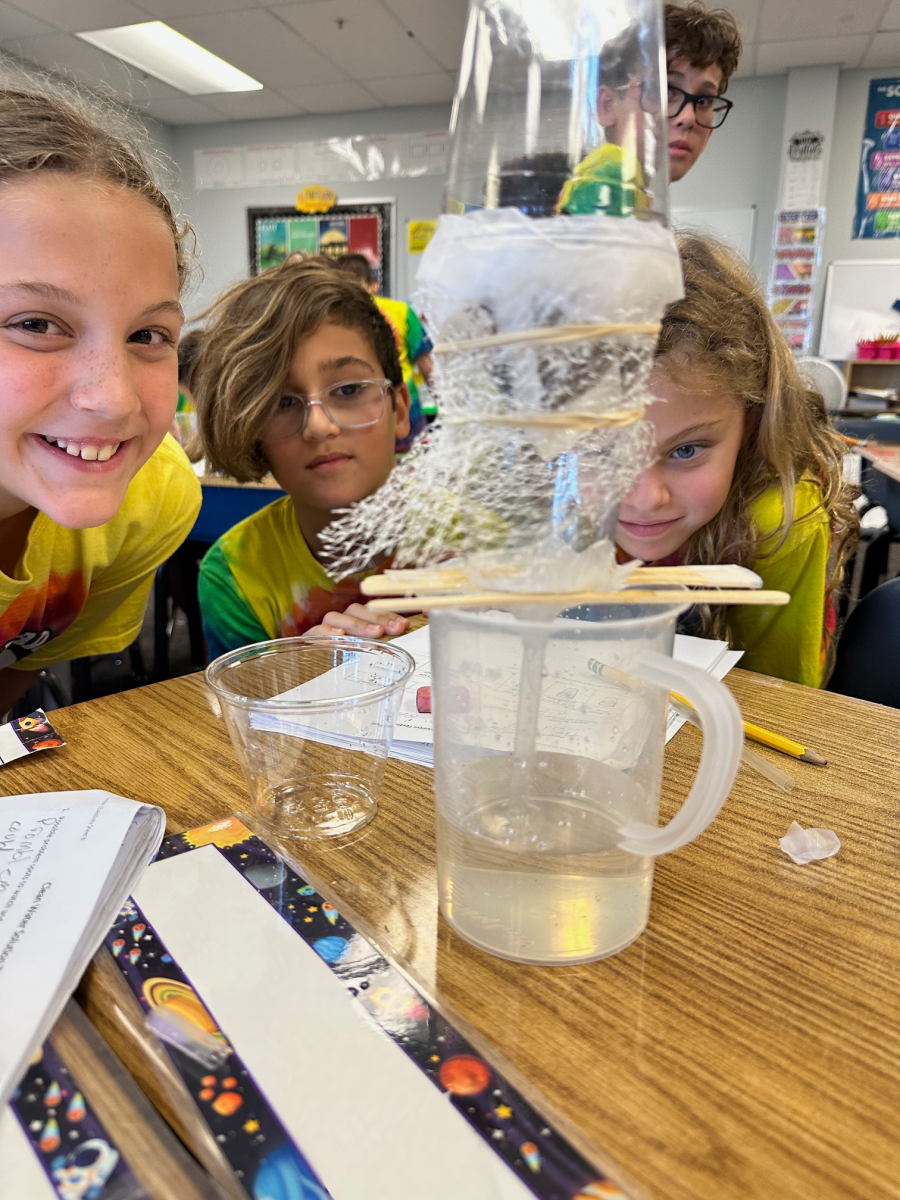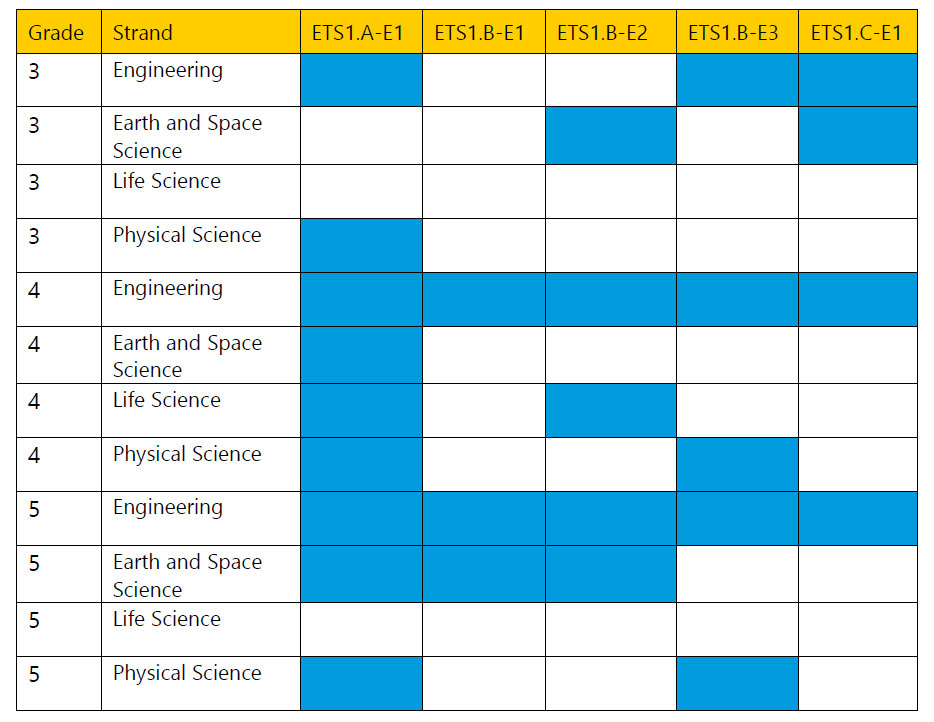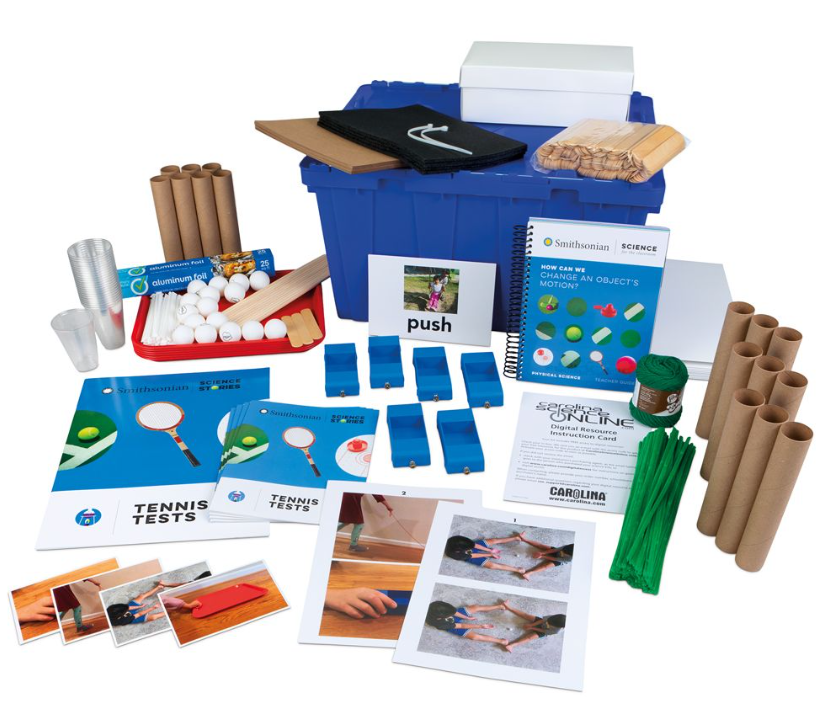Engineering Integration
Engineering is a systematic and often iterative approach to designing objects, processes, and systems to meet human needs and wants (National Assessment Governing Board, 2010). It’s important for students to understand how science can be utilized to solve real-world problems through engineering. Students have ample opportunities to build their engineering design skills throughout Smithsonian Science for the Classroom.
Engineering is not a rigid process, but it is useful to think about it as including three parts: defining the problem, developing possible solutions, and determining which solution best solves the problem. Smithsonian Science for the Classroom provides opportunities for students to participate in each aspect of this process multiple times across the K-5 series.
 Students test a solution to clean water.
Students test a solution to clean water.
In grades K-2, the Next Generation Science Standards provide the following disciplinary core idea elements within the topic of engineering design.
ETS1.A: Defining and Delimiting Engineering Problems
P1 - A situation that people want to change or create can be approached as a problem to be solved through engineering. Such problems may have many acceptable solutions. (K-2-ETS1-1)
P2 - Asking questions, making observations, and gathering information are helpful in thinking about problems. (K-2-ETS1-1)
P3 - Before beginning to design a solution, it is important to clearly understand the problem. (K-2-ETS1-1)
ETS1.B: Developing Possible Solutions
P1 -Designs can be conveyed through sketches, drawings, or physical models. These representations are useful in communicating ideas for a problem’s solutions to other people. (K-2-ETS1-2)
ETS1.C: Optimizing the Design Solution
P1 - Because there is always more than one possible solution to a problem, it is useful to compare and test designs. (K-2-ETS1-3)
The table below shows how students using Smithsonian Science for the Classroom Kindergarten – Grade 2 modules will gain experience with these aspects of engineering design.

In Grade 3-5, The Next Generation Science Standards provide the following disciplinary core idea elements within the topic of engineering design.
ETS1.A: Defining and Delimiting Engineering Problems
E1 - Possible solutions to a problem are limited by available materials and resources (constraints). The success of a designed solution is determined by considering the desired features of a solution (criteria). Different proposals for solutions can be compared on the basis of how well each one meets the specified criteria for success or how well each takes the constraints into account. (3-5-ETS1-1)
ETS1.B: Developing Possible Solutions
E1 - Research on a problem should be carried out before beginning to design a solution. Testing a solution involves investigating how well it performs under a range of likely conditions. (3-5-ETS1-2)
E2 - Tests are often designed to identify failure points or difficulties, which suggest the elements of the design that need to be improved. (3-5-ETS1-3)
E3 - At whatever stage, communicating with peers about proposed solutions is an important part of the design process, and shared ideas can lead to improved designs. (3-5-ETS1-2)
ETS1.C: Optimizing the Design Solution
E1 - Different solutions need to be tested in order to determine which of them best solves the problem, given the criteria and the constraints. (3-5-ETS1-3)
The table below shows how students using Smithsonian Science for the Classroom Grade 3 – Grade 5 modules will gain experience with these aspects of engineering design.

References:
National Assessment Governing Board. (2010). Technology and Engineering Literacy Framework for the 2014 National Assessment of Educational Progress. Available: http://www.nagb.org/publications/frameworks/prepub_naep_tel_... [April 2011].

Smithsonian Science for the Classroom is designed to engage, inspire, and connect your students firsthand to the world around them. The curriculum has been developed in consultation with teachers and field tested in a range of schools with diverse populations. It draws on the latest findings and best practices from educational research.
